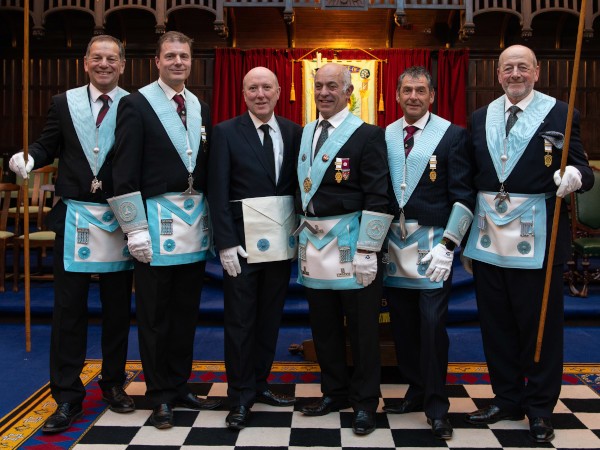Step-by-Step Manual on How to Become a Freemason for New Members
Step-by-Step Manual on How to Become a Freemason for New Members
Blog Article
Exploring the Mysteries of the Freemason: What You Required to Know
The Freemason, a term commonly shrouded in intrigue and controversy, stands for a complex tapestry of historic reality and modern-day misconception. Developed in the late 18th century, this secret society was originally rooted in the Enlightenment's perfects yet has given that ended up being identified with conspiracy theory theories about elite control. As we browse the beginnings, vital figures, and the raw contrast between myth and fact, one need to consider just how these narratives affect contemporary perceptions of power and privacy. What could be revealed through a better evaluation of these aspects can test long-held presumptions about the shadows that linger in our culture.
Beginnings of the Freemason
The origins of the Freemason are soaked in a mix of historical intrigue and ideological eagerness. Established in 1776 in Ingolstadt, Bavaria, by Adam Weishaupt, the team was originally developed as a secret society focused on advertising Knowledge suitables such as factor, secularism, and the splitting up of church and state. Weishaupt, a professor of canon law, looked for to challenge the prevailing authority of the church and state, which he considered as oppressive establishments stifling intellectual and personal flexibility.
The Freemason looked for to hire influential participants from various societal industries, including politics, academia, and the arts, to promote a network dedicated to these Enlightenment concepts. The society run under a veil of secrecy, using coded language and rituals to safeguard its participants from mistreatment, particularly offered the repressive climate of the moment. However, the Freemason dealt with considerable opposition from both governmental authorities and spiritual institutions, which saw the group as a risk to their power.
Secret Numbers and Members
That were the essential numbers that shaped the Freemason's early influence and direction? The Bavarian Freemason, established in 1776 by Adam Weishaupt, became a response to the overbearing social frameworks of the moment. how to become a freemason. Weishaupt, a law professor, imagined the company as a means to advertise Enlightenment ideals such as reason, secularism, and equal rights. His preliminary employment efforts included significant intellectuals, such as Baron von Knigge, that played an important function in broadening the group's subscription and business framework.
Another substantial figure was Johann Gottlieb Fichte, a prominent theorist whose concepts on nationalism and education and learning resonated with the Freemason's objectives. Although Fichte was not a formal participant, his thoughtful supports influenced the team's ideological background. In addition, figures like the author and thinker Johann Wolfgang von Goethe were associated with the broader intellectual movements of the time, although their straight involvement with the Freemason remains discussed.
These essential figures added to the Freemason's early direction, pressing the limits of political and social idea, while their collective initiatives intended to test established standards and cultivate an environment of modern adjustment in Europe.
Myths vs. Truth
Many false impressions surround the Freemason, often blending reality with fiction in a way that obscures its true nature. The idea that the Freemason continues to put in substantial influence over world events is a misconception - how to become a freemason.
An additional widespread myth is that the Freemason consists of a network of elite individuals controling global events. Actually, many conspiracy theory concepts exaggerate the group's relevance, attributing unproven intentions to societal patterns and events. This has caused an oversimplified sight of complicated issues.

Modern Analyses
Contemporary analyses of the Freemason usually reflect wider social anxieties and an attraction with secrecy and power. This modern lens often associates the Freemason with conspiracy theories that suggest a concealed elite coordinates globe occasions, adjusting federal governments and economies for their very own gain. Such stories take advantage of a deep-seated suspect of authority, especially in times of dilemma or social upheaval.

Furthermore, some modern analyses mount the Freemason as an allegory for the intricacies of globalization and the interconnectedness of prominent individuals and organizations. This perspective encourages an important exam of just how power read the full info here characteristics operate in today's world, highlighting the balance in between transparency and secrecy in governance and corporate practices.
Social Influence and Tradition
Influenced by centuries of intrigue, the cultural impact and heritage of the Freemason extend much beyond its historic beginnings. This secret culture, established in the late 18th century, has actually penetrated different aspects of pop culture, from literary works and film to music and art. The principle of the Freemason has evolved right into an icon of conspiracy theories, frequently standing for a regarded covert power manipulating worldwide events.
In literary works, authors like Dan Brown have actually woven the Freemason into elaborate stories, fascinating visitors with styles of privacy and power. Films such as "National Prize" and "The Da Vinci Code" even more perpetuate the appeal of the society, mixing truth with fiction to develop appealing stories.
The Freemason's influence additionally prolongs right into music, with musicians referencing the organization to stimulate themes of rebellion and social critique. This representation has added to an attraction with the idea of clandestine teams controlling the bars of power, reflecting societal stress and anxieties about authority and transparency.
Inevitably, the Freemason's legacy is a complicated tapestry of misconception and reality, forming perceptions of secrecy and control in modern discourse. Its enduring visibility in society underscores humankind's seasonal pursuit for comprehending surprise truths.
Final Thought
The expedition of the Freemason discloses a complicated interaction in between historic facts and modern myth-making. Established in the Knowledge period, this society aimed to challenge oppressive frameworks, yet its heritage has actually been overshadowed by conspiracy theories that recommend elite adjustment. Recognizing the distinctions between the original suitables and contemporary interpretations is important for understanding the sustaining attraction with the Freemason and its considerable influence on cultural you can try this out narratives surrounding power and privacy in culture.
Report this page